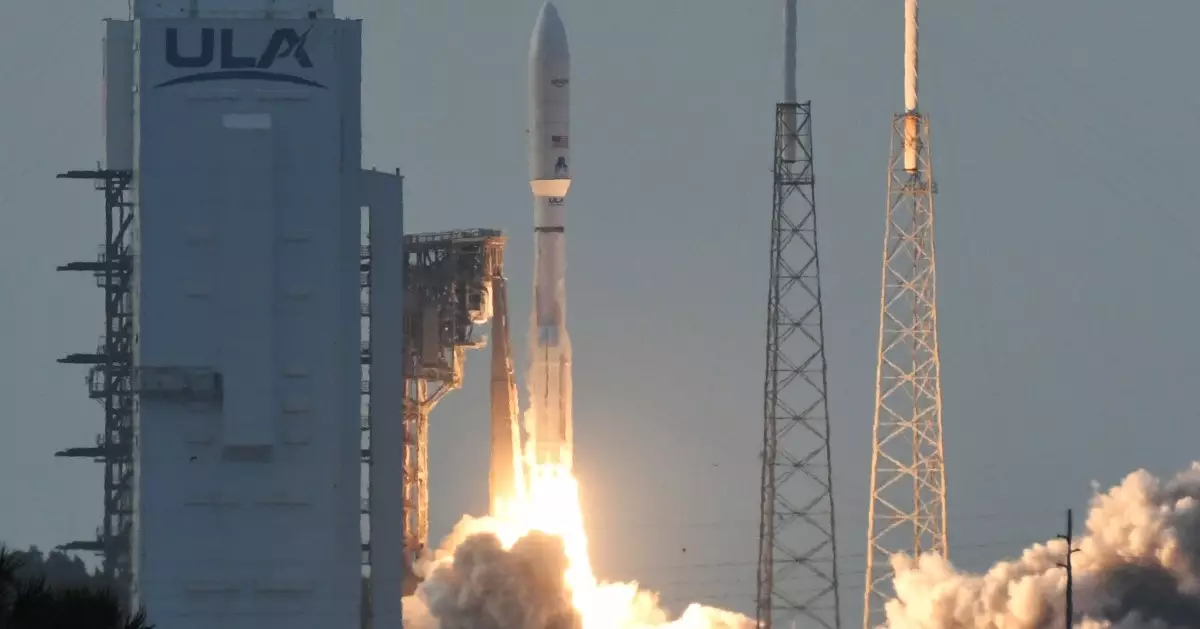In the rapidly evolving landscape of satellite internet services, Amazon’s Project Kuiper emerges as a formidable contender, gradually taking form with the successful deployment of its first 27 satellites into low-Earth orbit. This monumental event, which unfolded at Cape Canaveral, Florida, marks not just a logistical achievement, but a strategic move that signifies Amazon’s commitment to bringing high-speed internet to underserved regions across the globe. The initiative, aspiring to deploy over 3,200 satellites eventually, represents a bold challenge to industry leader Starlink.
The Journey Begins: Launch Details
The launch, conducted by the United Launch Alliance (ULA) using an Atlas V rocket, took place after a postponed attempt due to unfavorable weather. This initial step underscores the complexity and challenges inherent in space missions. Amazon CEO Andy Jassy characterized the event as an embodiment of teamwork and innovation. It’s incredible to consider the breadth of collaboration required to coordinate such an intricate operation: from technological development to logistical execution, each step necessitating flawless synchronization.
As the 27 satellites soared into low-Earth orbit, they reached an operational altitude of approximately 280 miles. Early reports confirm that these satellites are engaging effectively with ground systems—a crucial benchmark in satellite operations. This successful activation not only instills confidence in Amazon’s technological capabilities but also sets the stage for what the company hopes będzie wysoka prędkość i niskie opóźnienie internetowych usług. The ambitious timeline indicates that Amazon aims to start offering these services by the end of the year.
Competitive Landscape: Project Kuiper vs. Starlink
The satellite internet domain is increasingly becoming a battleground for major players, with Starlink currently leading the charge. SpaceX, with its extensive rollout of over 7,200 satellites and an ambitious plan totaling 34,400, presents a significant obstacle for newcomers such as Amazon. The competition is intense, striking a balance between rapid deployment and regulatory compliance. Amazon has a pressing directive from the Federal Communications Commission (FCC) to have 1,618 satellites operational by mid-2026—this clearly establishes that the company must accelerate its launch cadence to gain a foothold in the market.
Starlink, having already secured a robust customer base, boasts advantages that are difficult to overlook. With over 250 successful launches to date, the efficiency and robustness of SpaceX’s operations put immense pressure on competitors like Project Kuiper. Nonetheless, what Amazon lacks in the initial head start, it compensates for with a relentless drive toward innovating connectivity solutions, particularly for rural and underserved populations that have long been sidelined in the digital age.
Infrastructure and Future Aspirations
An essential part of Project Kuiper’s strategic framework is its partnership with ULA, which is not just about launching satellites but also enhancing launch infrastructure. ULA’s CEO, Tory Bruno, highlighted the advancements made to support increased frequencies of launches aligning with Amazon’s goals. This symbiotic relationship strengthens the operational backbone necessary for future missions and showcases a forward-thinking approach to satellite deployment, emphasizing safety alongside capability.
However, as the skies become increasingly crowded with satellites from various entities, operational challenges regarding space debris and orbital management will intensify. Ensuring sustainable practices in satellite deployment and operation will be critical as Amazon begins its journey. It’s not merely about launching satellites; it’s about maintaining a functional and responsible orbit.
The Road Ahead
Looking ahead, Amazon stands at a pivotal juncture. The immediate challenge is to execute the upcoming missions with the same level of success as the first, while also working towards establishing a customer base that will rely on their service for everyday connectivity. Equally, the overarching goal of transforming access to the internet in remote areas reflects a deeper corporate ethos—prioritizing inclusivity and innovation in a world where digital access is no longer a luxury but a necessity. Thus, Project Kuiper’s trajectory is about much more than just satellite launches; it’s about redefining the future of global connectivity.


Leave a Reply